
Binding and Covering
Binding includes the sewing of quires together, the attachment of boards, covering the boards, and the decoration thereof. With regards to sewing and covering, Ethiopia has a unified tradition which is probably little changed from when it was adopted from the Coptic codex sometime in the 4th century. Whereas Coptic codices have undergone significant change since then, Ethiopian binding practices have been (apparently) remarkably stable, and extant Ethiopian bindings are essentially similar in their general character. Early Muslim adoption of the codex form is thought to be based upon a model transmitted through Ethiopia, though the Islamic book has diverged since then (a few words about Islamic bookmaking in Harar are included in the Other Writing section).
Sewing
Ethiopian sewing is often referred to as Coptic, a potentially misleading term, as there are/were several distinct styles of Coptic bookbinding. It is characterized by a linked chain-stitch, generally performed on two sewing stations. Contrary to what has been written on the subject, the stations are not performed with paired needles, the awl taking the place of the needle in both making the hole and passing the thread through. Historically, ox-gut, sinew, and other animal products may have been used, but threads of natural fibres are used predominantly today.
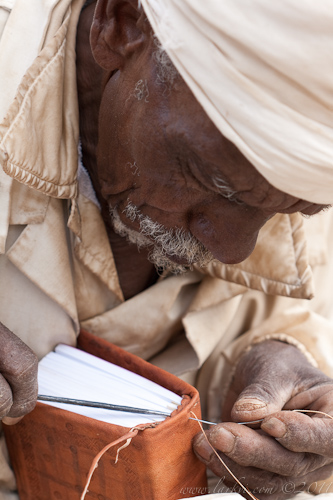
Covering and Decorating
Boards are generally wood, and historically olive-wood has been preferred. As Ethiopia has become more deforested, olive-wood has become scarcer, and the wood of wanza (Cordia africana) has become favored for use, as it is light and strong. Modern books occasionally use plywood or other modern, milled wood in place of the traditional, hand-carved pieces. Often, the binding is covered in a local version of Morocco leather which is held on with a glue made of tef, the local cereal grain. The insides of the boards are covered with a square of silken fabric, with a great variety of fabrics being used historically. To attach the cover to the spine, endbands made using a simple weaving technique are sewn on (see images).
Sewing the endbands on.
Axum, 2009.
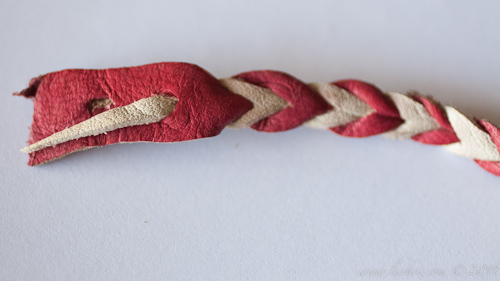
An endband, ready to be sewn into a manuscript.
Mek’ele, 2009.
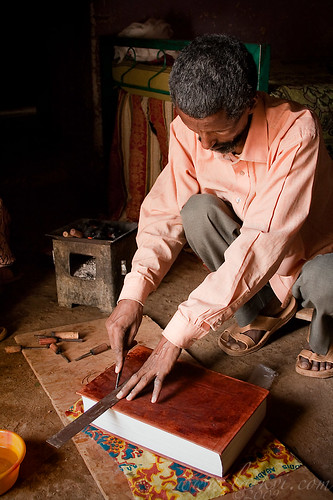
Cover Decoration
A variety of metal tools, heated in the fire, are used to stamp and rule designs into leather covers. This is known as "blind tooling." The patterns can be quite abstract, but include a number of frequent motifs like crosses, including elaborate crosses, the peaked roofs of church buildings, and nested layers of borders using different tools. The process of using the tool that produces lines is shown in the photo on the right, where Marigeta Birhane, having taken the tool from the fire and cooled it in water, is drawing it along a ruler to outline the decorative pattern for a printed book that he is covering in a traditional way.
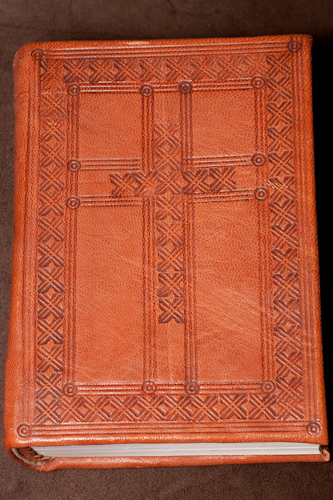
Leather-covered print Psalter with blind-tooled cover decoration.
Axum, 2009.
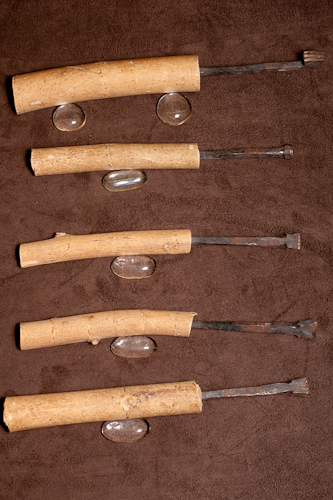

Stamps for decorating leather covers.
Axum, Ethiopia, 2009.
Tool names and patterns, from top to bottom: Three bars, Bird’s Eye, Criss-cross, Palm-leaf, Cross.
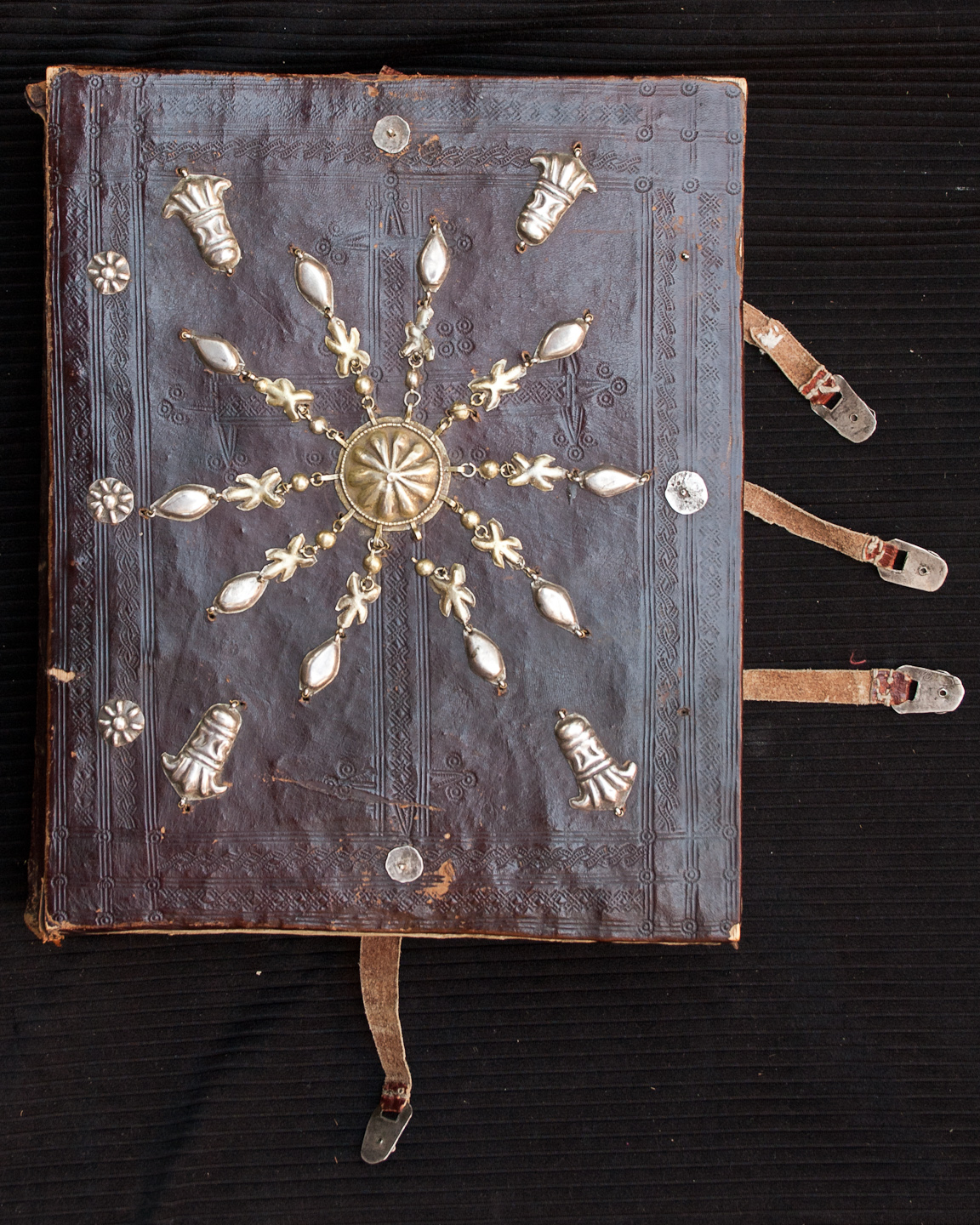
Deluxe Bindings
Most Ethiopian manuscripts are in uncovered wooden boards, or covered in leather. At the lower end of the scale, covers may even be of unreinforced leather or a manuscript may entirely lack boards, being folded or carried as bound quires. Some deluxe manuscripts, however, are bound into metal covers, or have bosses and metal attachments to decorate, beautify, and protect the cover. Additionally, clasps and straps may be present, to hold the book shut and to keep the parchment from cockling in humid weather. Such manuscripts were often produced in an imperial context, and may be found in the libraries of books left or donated by the Emperors of Ethiopia.
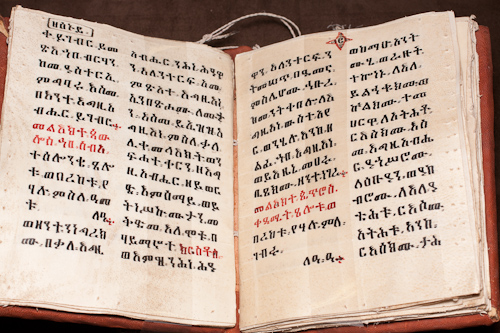
Samples
Manuscript showing division and quire-mark.
Tembien, Tigray, 2009.
Many manuscripts have materials divided by the day of the week. Here, the division for the reading for Monday (ዘሰኑይ) is across the gutter from the quire-mark (፪) on the beginning of the second quire. Quire-marks serve to keep the work in order while it is waiting to be bound.
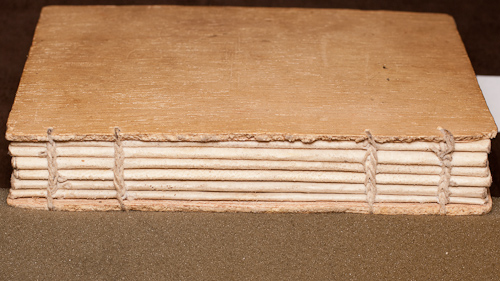
Bandlet of Righteousness
Ge'ez. 110 x 153 mm. Gonder, 2009.
showing chain stitches.
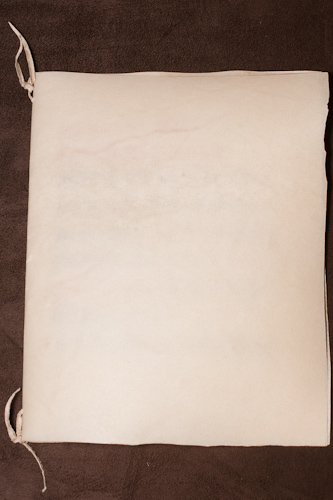
Tacketed quire.
"Tackets" hold the quire together before binding. These are twisted parchment.
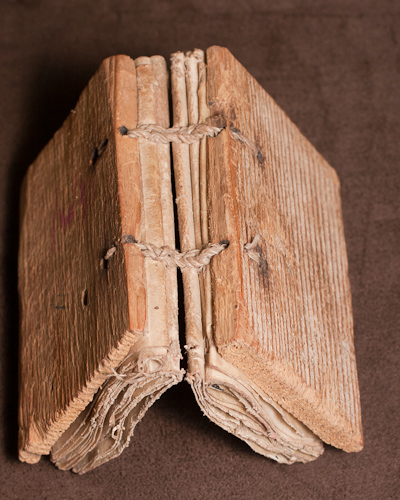
Bandlet of Righteousness
Ge'ez. 63 x 87 mm. 20th century(?)
Spread to show the separation between quires and the stitching. A cheaply-produced popular book, it uses modern wooden materials for the boards, rather than traditional, local woods.

